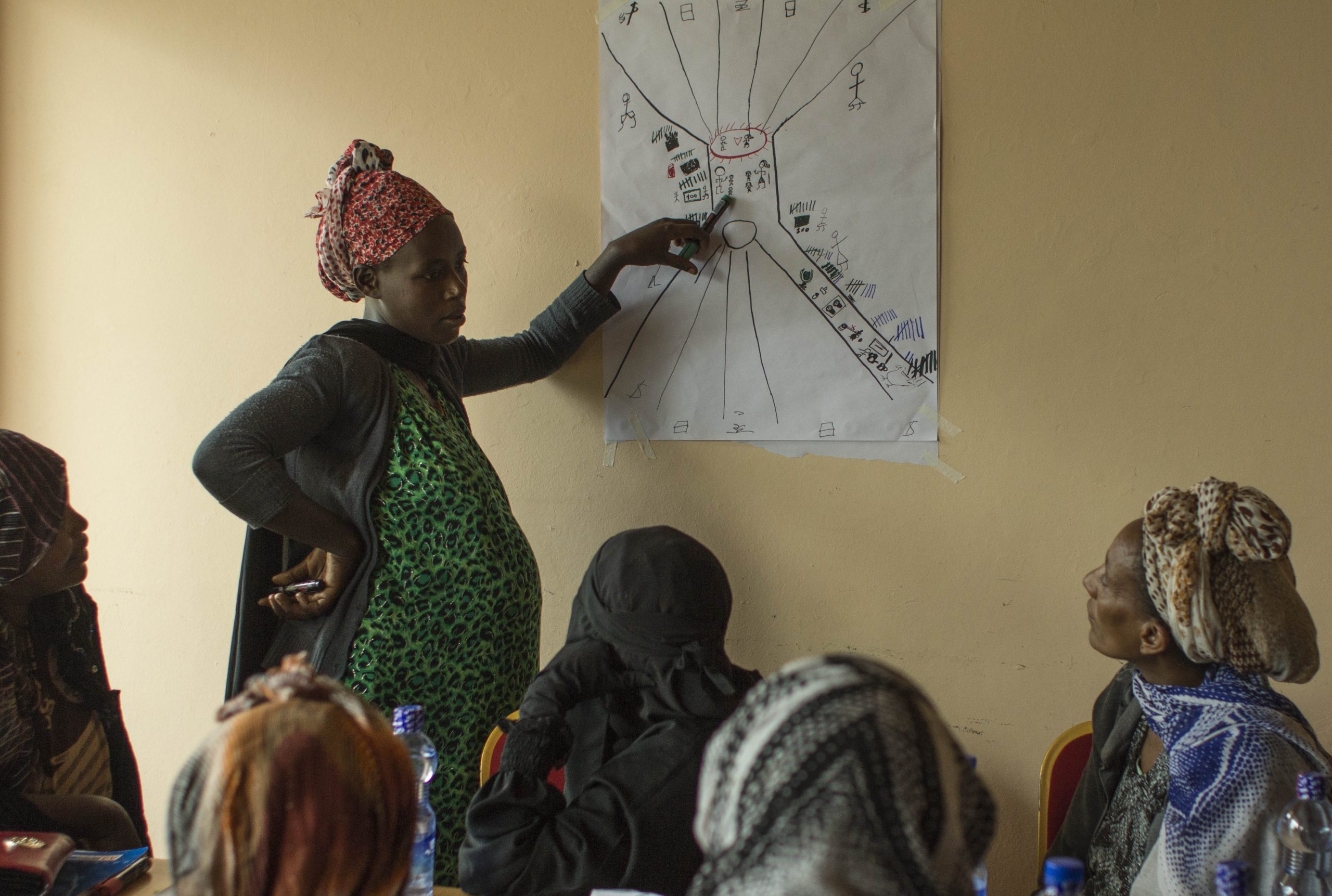We grow trees to turn earth beneath our feet into fruit that we can enjoy and eat. If we nourish the tree and give it much thought so that it grows straight, we can own the fruit of our actions.
We need first to decide what sort of tree we want to grow – what vision do we have? Then we look at the roots – how can we stop them growing tangled and confused. What sorts of branches can they have to keep the tree balanced? What are the forces outside the trunk or in the soil or the air that may make the tree grow straight or crooked. Then, depending on the type of tree we have, we prune and train the branches, roots or trunk side branches for our fruit. And we select and nurture the best fruit to make them big.
Experience may make us decide that we should encourage some sorts of fruits and not others. But we need to continue to have visions and make new plans through tracking and reflecting on what we have done.
GEMs Action Trees enable us to clarify very complex reality at a particular point in time. They examine relationships between different types of inputs and outputs or dimensions of an issue.
But the aim is not the analysis itself, but to generate a clear idea of ways forward, with fruits and forces that we can track.

Action Trees:
diagram Template dna




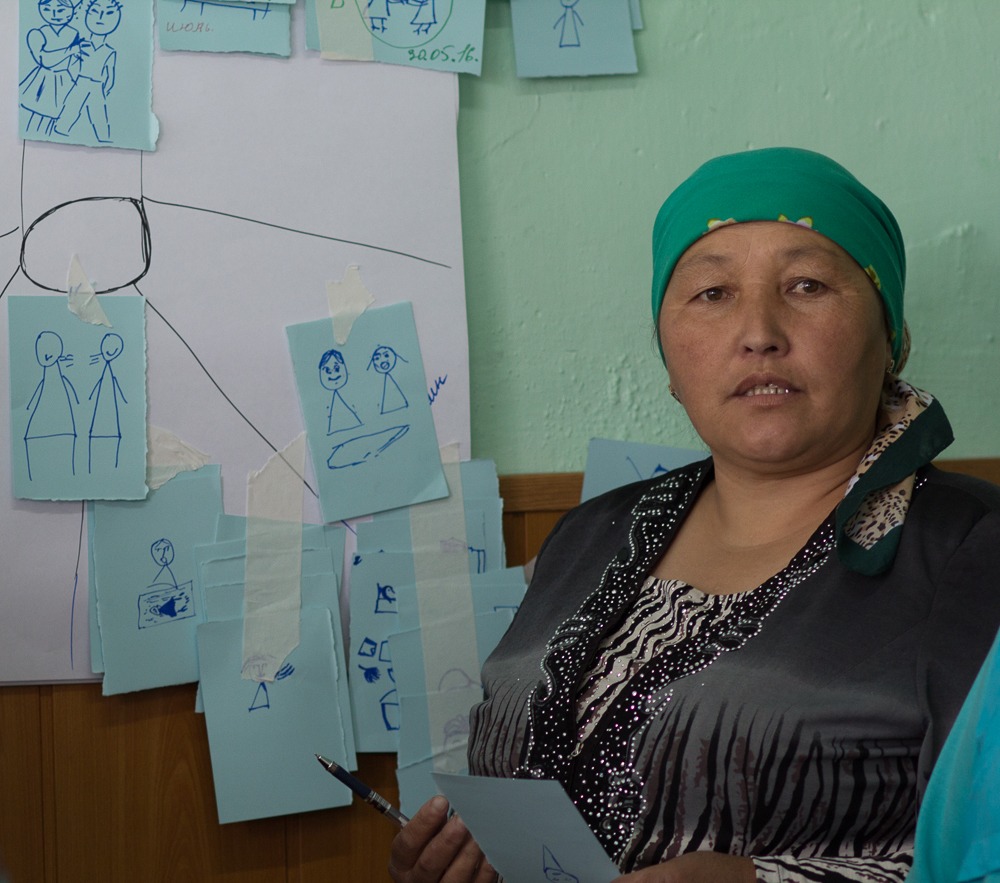
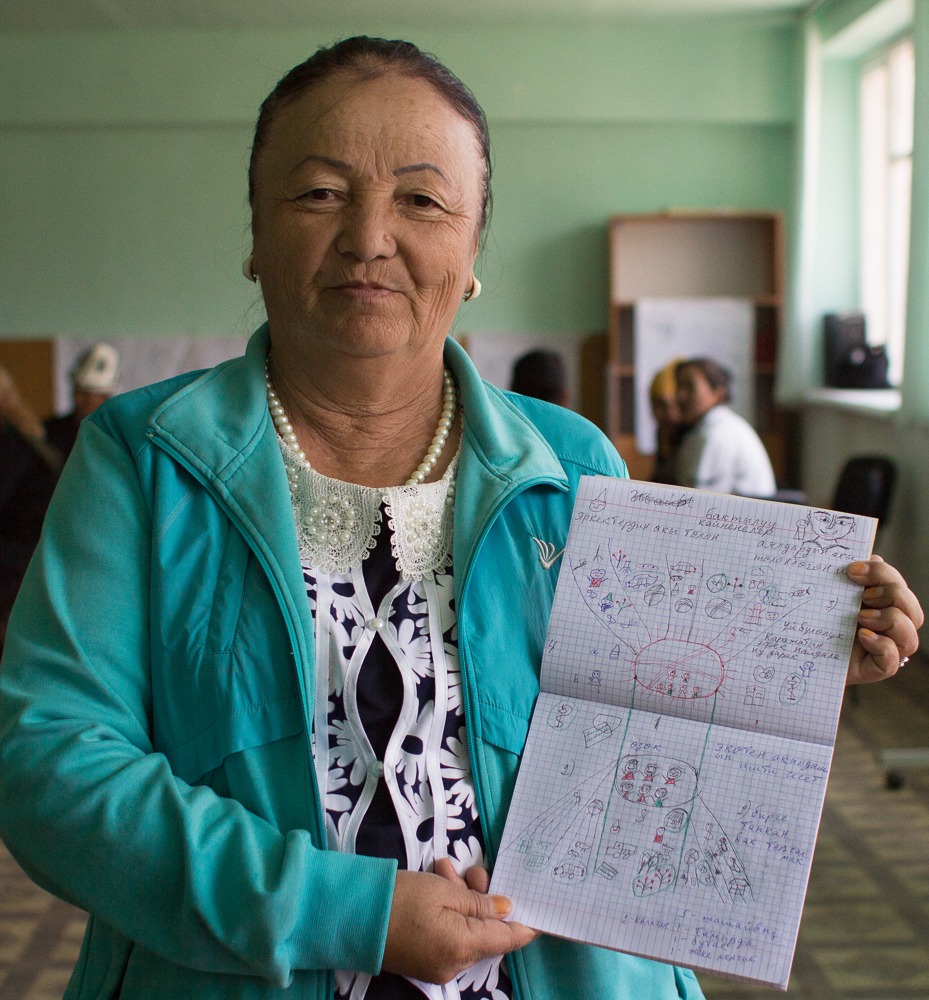
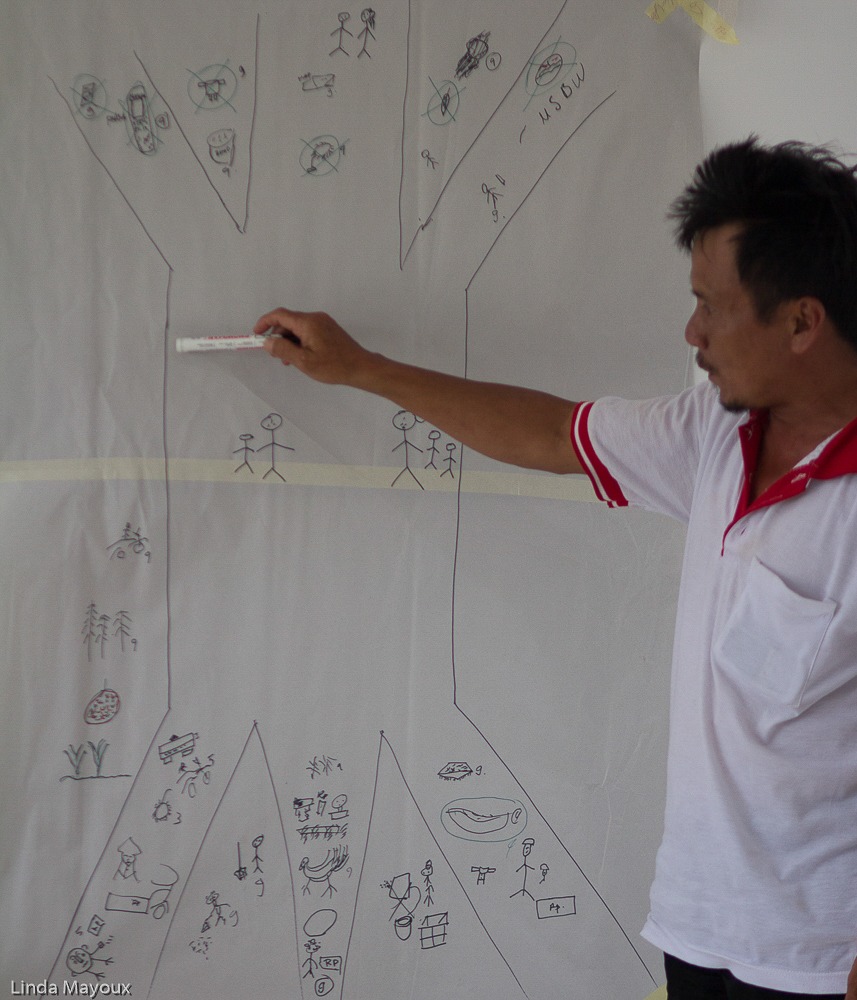
Trees are a very common type type of concept diagram used in many participatory processes as Problem/Solution Trees, Input/Out Trees, Cause/Effect Trees and so on.
Adaptation by Linda Mayoux of the Challenge Action Trees as an action-oriented version of Problem/Solution Trees for PALS strategic planning started at a participatory workshop Kabarole Research and Resource Centre in Western Uganda in 2002. Business trees were developed with Trickle Up US for work with Bukonzo Joint and Green Home in Uganda from 2004. Development of the Gender Balance/Happy Family Tree was in 2004 as part of work with ANANDI in India and LEAP-PASED in Sudan.
As time progressed, on the basis of experience in community workshops, a number of features were added for clarity and to promote more in-depth and useful analysis by people with high levels of education as well as those who never had access to formal education:
- use of the trunk to put the vision and current circle to have some relationship with the Change Journey
- more experience in specification of the roots and branches for particular types of issue
- colour-coding for tracking and assessment at different levels
- participatory facilitation process for sharing and quantification
What are Action Trees?
Action Trees aim to clarify very complex reality. They are a snapshot analysis at a particular point in time. They analyse relationships between different types of inputs and outputs or dimensions of an issue in order to identify actions and achievement targets. Trees that start by looking at ‘big’ and therefore complicated issues, may need to be subdivided into smaller and more manageable questions before being put back together on a ‘parent tree’.
All GAMEChange Action Trees have five parts:
- Issue trunk with vision and current situation, and sometimes other elements
- Roots as inputs
- Branches as outputs
- External forces: wind, rain, subsoil, fertiliser that affect the growth of the tree
- SMART Action fruits for strategy actions that individuals, groups and organisations can implement themselves and track.
Although all trees can be adapted for research and impact assessment, the aim is not the analysis itself, but to generate a clear idea of ways forward, with fruits and forces that can be tracked.
Individuals track and share their trees. Groups and organisations also track and quantify the fruits to assess progress and compare progress between groups for monitoring and impact assessment.
Types of Trees
Action Trees are sometimes on completely separate topics from the other tools. More commonly they take specific challenges or elements of vision/targets/relationships from the Change Journey, Relationship Map or Diamond Vision.
Trees can be of very many types, including:
- Happy Family or Gender Balance Tree: The Happy family Balance Tree identifies gender and age inequalities in work contribution and expenditure benefits in the household and the changes needed for balance to make the tree grow straight and the tree to be sustainable and thrive.
- Livelihood / Business / Financial Management Tree: Livelihood Trees are a ‘snapshot’ planning tool to examine existing costs and income structure for particular economic activities and how incomes can be increased through changing costs and/or expenditures to enable reinvestment and savings.
- Challenge Action Tree: Challenge Action Tree (an action-oriented adaptation of a ‘problem solution tree) examines the causes of challenges, potential solutions to reach a vision and action commitments needed by individuals to move forward.
- Multi-stakeholder negotiation ‘win-win’ trees to examine different stakeholder perspectives and bring these together as a set of action commitments for each stakeholder.
All the trees above can be just individual, or they can be done for groups and organisations.
The Tree
The trunk can become a mini Change Journey: with vision at the top, current circle at the bottom and other points on the way.
The roots and branches should be between 3-5 and correspond to each other.
Consistent colour coding so that the analysis and strategy tracking is kept clear. Best to start with a draft in pencil, but then distinguish:
- red ‘ripe fruits’ are drawings and circles for vision and achievements/actions done.
- black ‘native fruits’ are what is already there.
- green ‘unripe fruits’ are drawings and circles of positive things yet to be achieved or actions yet to be done. Once one thing is achieved, think of some new green fruits.
- blue ‘perished fruits’ are drawings, crosses and circle for things thatare to be avoided, no longer want or you know from experience now will not work.
SMART Action Fruits
GAMEChange Action Trees are not just ‘talking shops’.
They must always have SMART ‘action fruits’ or concrete action commitments that can be implemented by individuals within a given time-frame and tracked. Not just vague ‘solutions’ like ‘more training and awareness’. These individual change commitments are shown on the branches (like apples), roots (like potatoes) and/or trunk (like cocoa). It is important also that these should be actions achievable by individuals, not a wish list for someone else or an organisation.
Once all individual actions are exhausted, then support needed from groups or organisations can be indicated as flowers or bees – but these are more fragile and bees only go where there is already lots of honey or they may never come.
Action learning/assessing change
Living action learning plan that is revisited, tracking progress, analysing what works and does not work, and and tracked over time, not left in a drawer until the next workshop or visit by the donor.
Learn from experience: start with one tree, but you can also do more trees to address other issues and challenges that arise from your analysis.
Do an overall assessment: is the tree healthy? how far are you up the trunk towards your vision? If not why? Is this because the roots and branches are unbalanced? Or because external forces are too strong? What are the implications for you next tree?
Change Movement building
- Share the steps with other people in your households, communities and networks so that they can do their own tree analysis – not copy yours.
- Meet together regularly to share experiences of what action strategies work and what does not work.
- Develop collective action trees over time for individual and collective actions to support each other – change starts with the individual, that is where you have responsibility and some control, But not all things can be done alone. And not everything should be just for you if you want a community, society or world that is good to live in.
Adaptation questions
- What is the vision/ purpose/ question? are these broad interrelated elements, or does each thing need its own tree? or do you need to do both?
- Whose tree is it? individual? household? community? bringing together many individual trees? developing a collective or organisational cooperation tree?
- How many roots and branches? what are the most important categories for this particular tree issue and vision?
- Is there a specific timeframe for the action fruits? Should these be decided by the participant? Do you know of group structures and/or organisations who might be included in the analysis?
- Are there specific forces you want people to put on their analysis? Or will you just leave this to participants?
- How will you ensure gender mainstreaming and inclusion/prioritisation of the minority perspectives of people who start with most disadvantage? Specific icons eg woman/man ? Separate roots/branches (usually women are on one side, men on the other side with a big middle root/branch for common things.
Facilitation
Look carefully at distinctive GAMEchange facilitation guidelines
- Can be done as an individual or in large participatory and multi-stakeholder workshops but reflection always starts with the individual, then shared in a systematic inclusive and equitable participatory process.
- Make sure no one draws or plans for anyone else – all plans need to be honest reflections on reality, or they will not work.
- Facilitator should not hold the pen or dominate, participants should facilitate interactively and their voices should be heard at least 90% of the time – particularly those who start less confident and with greater challenges.
- Participants should write songs and/or do role plays/theatre that go through and practise the steps (see examples in videos above)
- Reversals of power: Continually develop strategies for gender mainstreaming and inclusion/prioritisation of the minority perspectives of people who start with most disadvantage?
Key points
- Colour coding of vision (red) plan (green) current (black) risks and negative things (blue)
- Do not get too bogged down in the roots and analysis of causes of causes of causes. The main aim is the action fruits. Also spend time on the forces – as in the Change Journey opportunities and challenges.
- Make sure people understand to track and share so that they use their tree and track the fruits as they ripen or perish, not just put it in a cupboard and forget it. If they share with their family, they can do a family action tree and put it on the wall so everyone can track progress.
- Empowerment check: are strategies for gender mainstreaming and inclusion/prioritisation of the minority perspectives to change power relations effective?
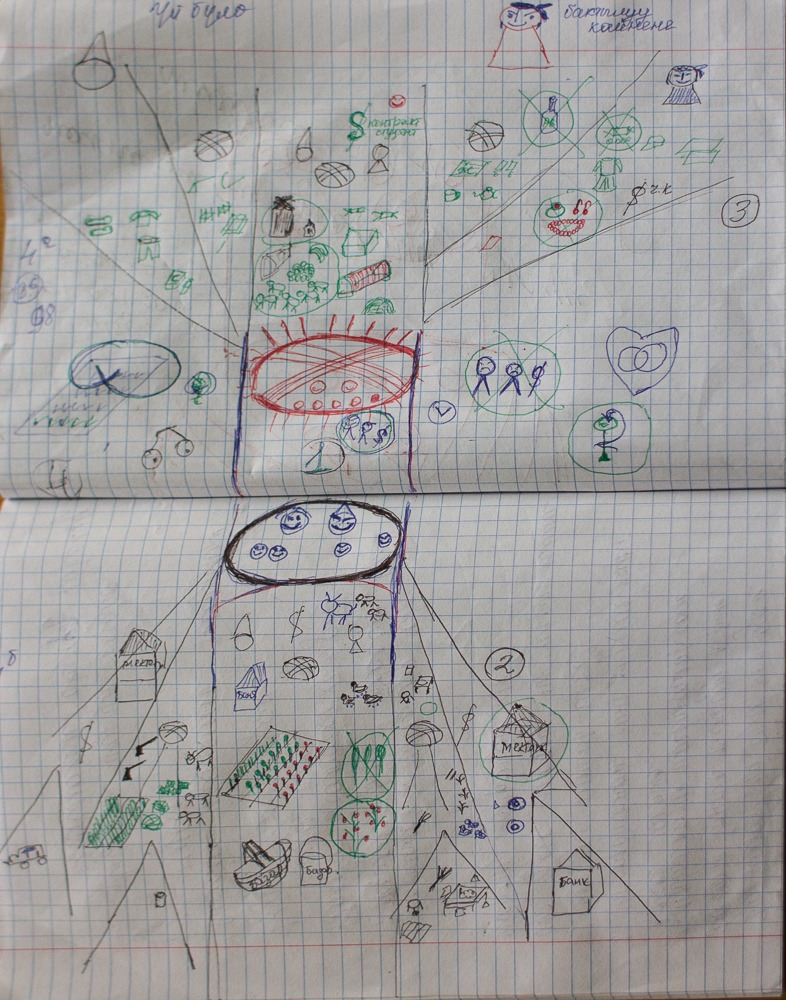
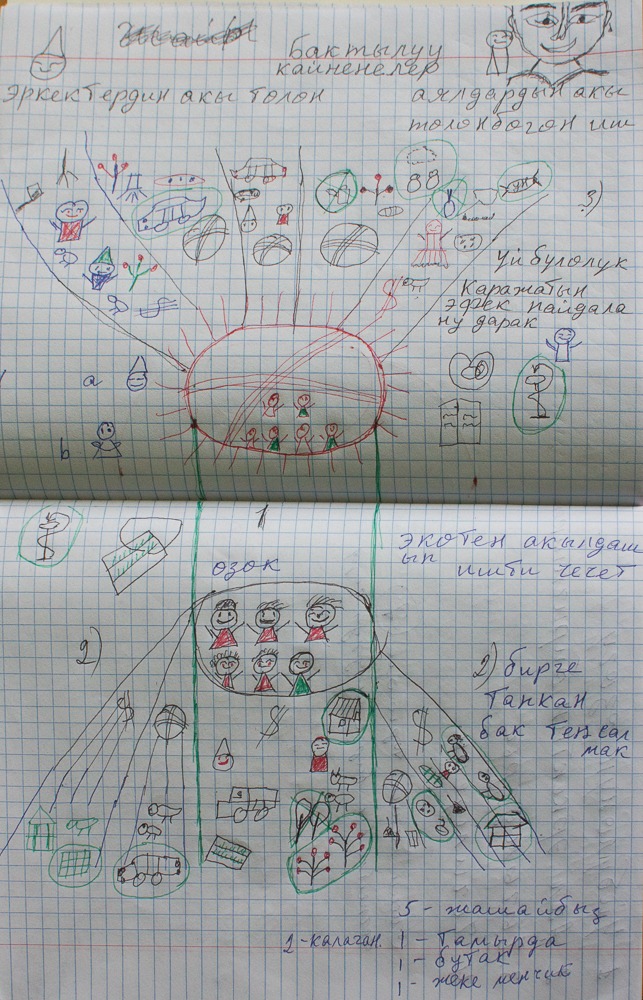
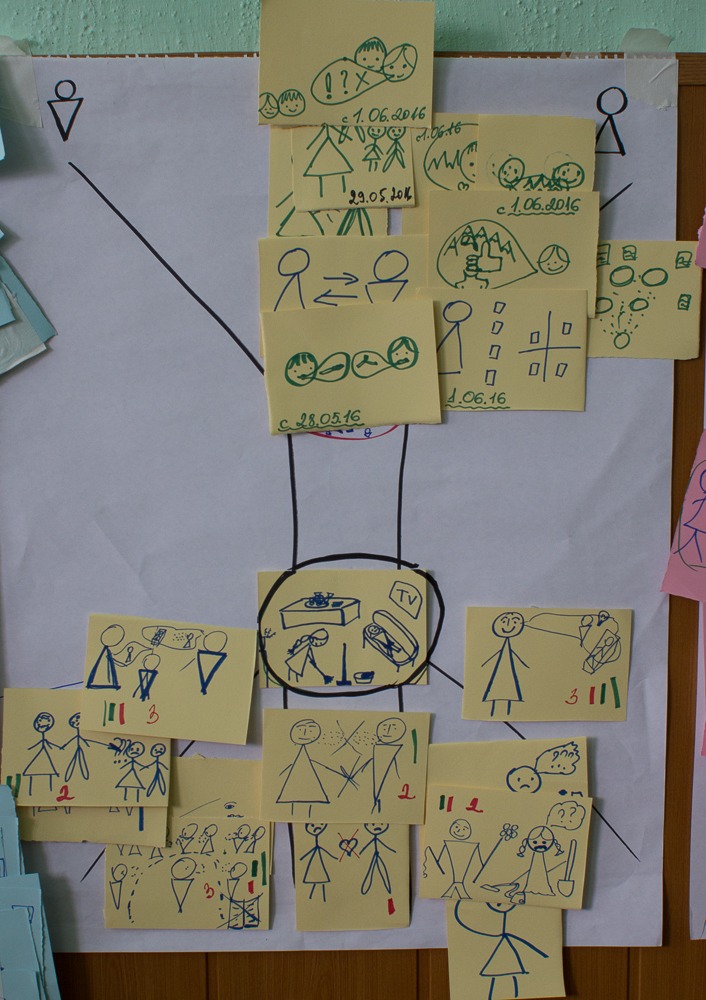



Toolkit Facilitation Examples
-

Action Tree: Generic Tree Steps
This post gives the generic steps of the GEMs Action Tree with links to practical adaptations with facilitation details.
-

EAV3 Family Violence Action Tree
The Violence Action Tree analyses the causes of priority types of violence, potential solutions and action commitments.
-
iLEAD MNCP 3: Leadership Action Tree
The iLEAD Tool 3 Leadership Action Tree (or Challenge/Action Tree) identifies actions that address leadership challenges – but the aim is action, not getting depressed with all the many challenges.

